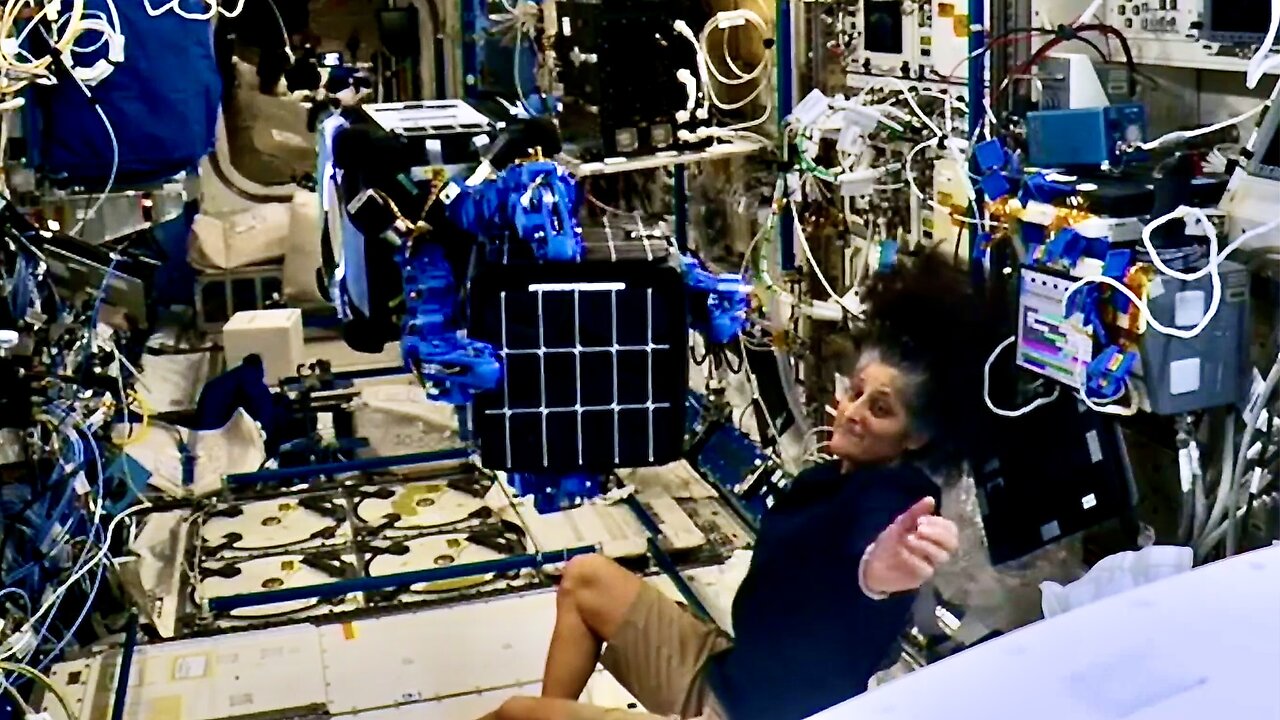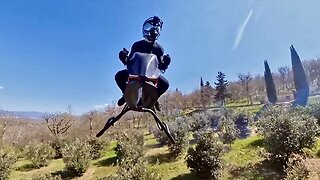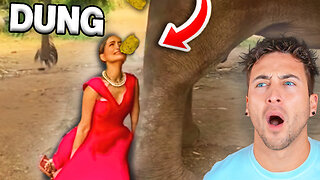Premium Only Content

Fascinating Science Experiments On ISS - International Space Station
NASA’s SpaceX Crew-9 mission with astronauts Nick Hague, Butch Wilmore, and Suni Williams, and Roscosmos cosmonaut Aleksandr Gorbunov, is preparing to return to Earth following their science mission aboard the International Space Station. Hague, Williams, and Wilmore completed more than 900 hours of research between over 150 unique scientific experiments and technology demonstrations during their stay aboard the orbiting laboratory.
NASA’s SpaceX Crew-9 mission with agency astronauts Nick Hague, Butch Wilmore, and Suni Williams, and Roscosmos cosmonaut Aleksandr Gorbunov is preparing to return to Earth following their science mission aboard the International Space Station. Hague, Williams, and Wilmore completed more than 900 hours of research between more than 150 unique scientific experiments and technology demonstrations during their stay aboard the orbiting laboratory.
Here’s a look at some scientific milestones accomplished during their journey:
Mighty microalgae
NASA astronaut Nick Hague processes samples for Arthrospira C, an investigation from ESA (European Space Agency) that transplants and grows Arthrospiramicro-algae aboard the International Space Station. These organisms conduct photosynthesis and could be used to convert carbon dioxide exhaled by crew members into oxygen, helping maintain a safe atmosphere inside spacecraft. Arthrospira also could provide fresh food on long-duration space missions.
Hague, wearing a red t-shirt, khaki pants, and a black headband, faces a blue worktable. In his right hand he holds a metal box about the size of a box of tissues with red panels and white wiring on the front. A laptop is attached to his pants and multiple wires, cords, equipment, and laptops are visible behind him.
Improving astronaut exercise
Researchers are testing the European Enhanced Exploration Exercise Device (E4D), a modular device that combines cycling, rowing, and resistance exercises to help keep crews healthy on long-duration missions. A single, small device effective at countering bone and muscle loss and improving cardiovascular health could help crew on future missions. NASA astronaut Butch Wilmore works on installing the device aboard the International Space Station ahead of its evaluation.
Garden watering
This red romaine lettuce growing in the International Space Station’s Advanced Plant Habitat is part of Plant Habitat-07, a study of how different moisture levels affect the microbial communities in plants and water. Results could show how less-than-ideal conditions affect plant growth and help scientists design systems to produce safe and nutritious food for crew members on future space journeys.
Packing it in
Packed bed reactors are systems that “pack” materials such as pellets or beads inside a structure to increase contact between any liquids and gasses flowing through it. NASA astronaut Suni Williams installs hardware for the Packed Bed Reactor Experiment: Water Recovery Series (PBRE-WRS) investigation, which examines how gravity affects these systems aboard the International Space Station. Results could help scientists design better reactors for water recovery, thermal management, fuel cells, and other applications.
Fueling the flames
During the Residence Time Driven Flame Spread (SOFIE-RTDFS) investigation at the International Space Station, this sheet of clear acrylic plastic burns at higher oxygen levels and half the standard pressure of Earth’s atmosphere. From left to right, the image sequence shows a side and top view of the fuel and the oxygen slowly diffusing into the flame. Studying the spread of flames in microgravity could help improve safety on future missions.
Monitoring microbes in space
During a recent spacewalk, NASA astronaut Butch Wilmore swabbed the exterior of the International Space Station for ISS External Microorganisms, an investigation exploring whether microorganisms leave the spacecraft through its vents and, if so, which ones survive. Humans carry microorganisms along with them wherever they go, and this investigation could help scientists take steps to limit microbial spread to places like the Moon and Mars.
#science #adventure #space
-
 3:39
3:39
Knowledge Land
5 months agoYour Personal Flying Scooter - Airbike Is Here - Volonaut
671 -
 1:02:09
1:02:09
VINCE
3 hours agoThe Process Is The Punishment | Episode 173 - 11/20/25 VINCE
152K84 -
 UPCOMING
UPCOMING
Athlete & Artist Show
42 minutes agoBOMBASTIC Sports & Table Cames
3 -
 UPCOMING
UPCOMING
The Mel K Show
50 minutes agoMORNINGS WITH MEL K - The Battle for your Brain: Psychological Warfare on Full Throttle- 11-19-25
1761 -
 UPCOMING
UPCOMING
The Shannon Joy Show
51 minutes agoTrump Says He’ll Import Foreign Workers To Make Chips * HHS Updates Website On Autism * LIVE With Tiffany Cianci On Predatory Private Equity & Incoming Pension Raid
28 -
 LIVE
LIVE
Grant Stinchfield
1 hour agoDOJ’s Salacious Distraction: The REAL Epstein Intel Is Locked in Langley!
43 watching -
 1:29:05
1:29:05
Nikko Ortiz
2 hours agoThis Is Gonna Hurt... | Rumble LIVE
5.57K -
 23:11
23:11
Simply Bitcoin
1 day ago $0.59 earnedThe Bitcoin Crucible w/ Alex Stanczyk & Tomer Strolight - Episode 9
14K -
 1:46:55
1:46:55
Benny Johnson
1 hour agoHow Good Your Life Could Be Under Trump's Mass Deportations | Citizens Cheer: 'AMERICANS First'
27.6K8 -
 LIVE
LIVE
Wendy Bell Radio
7 hours agoWELCOME TO THE SEWER
6,434 watching